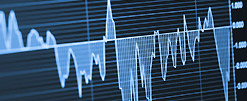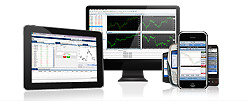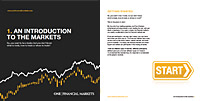

Dollar Edges Higher on Safe Haven Flows; Yen Also in Demand
By Peter Nurse
Investing.com - The U.S. dollar edged higher Tuesday, helped by raised geopolitical tensions, but still dropped to a two-month low against the Japanese yen as the market continued to factor in a less aggressive Federal Reserve’s tightening path.
At 03:10 AM ET (0710 GMT), the Dollar Index, which tracks the greenback against a basket of six other currencies, traded 0.1% higher to 105.440, just above the one-month low of 105.03 seen in early trade.
The dollar has seen some demand from safe-haven flows ahead of U.S. House of Representatives Speaker Nancy Pelosi’s impending visit to Taiwan.
The territory is claimed by China, and President Xi Jinping told his U.S. equivalent, Joe Biden, during a phone call last week that “whoever plays with fire will get burnt” in reference to U.S. interference in the dispute.
As a consequence, the more risky currencies have suffered a setback Tuesday, with EUR/USD down 0.2% to 1.0236, while GBP/USD fell 0.3% to 1.2207, dropping back from a five-week peak hit overnight.
However, USD/JPY fell 0.6% to 130.81, falling to its lowest level since June 6, with the pair down 4% in the past four sessions given its sensitivity to the gap between U.S. and Japanese government bond yields.
The benchmark 10-year U.S. Treasury yield fell to 2.52% earlier Tuesday, its lowest since April, as traders digested recent U.S. economic data weakness to reassess the potential future path of U.S. interest rates.
Data released Monday showed U.S. manufacturing activity slowed for the second straight month in July, with the ISM Purchasing Managers Index falling to a fresh two-year low.
This follows from last week’s very weak second quarter U.S. GDP release, the second negative quarter in a row, which could mean the Federal Reserve soon starts worrying more about an economic slowdown and less about raising interest rates aggressively to combat inflation.
"After the rather grim 2Q GDP numbers in the US last week, markets are now actively seeking evidence of how much of this technical recession is ‘real’," said analysts at ING, in a note. "The main gauge to watch is the unemployment rate, as a fully-fledged recession needs to see a weakening of the labor market."
AUD/USD fell 1% to 0.6952 after the Reserve Bank of Australia authorized a third consecutive half-point interest rate increase, as expected, but comments from RBA Governor Philip Lowe were taken as being dovish as he said the bank was not on a pre-set path to tightening policy, and will instead adopt a data-driven approach.
Begin trading today! Create an account by completing our form
Privacy Notice
At One Financial Markets we are committed to safeguarding your privacy.
Please see our Privacy Policy for details about what information is collected from you and why it is collected. We do not sell your information or use it other than as described in the Policy.
Please note that it is in our legitimate business interest to send you certain marketing emails from time to time. However, if you would prefer not to receive these you can opt-out by ticking the box below.
Alternatively, you can use the unsubscribe link at the bottom of the Demo account confirmation email or any subsequent emails we send.
By completing the form and downloading the platform you agree with the use of your personal information as detailed in the Policy.






